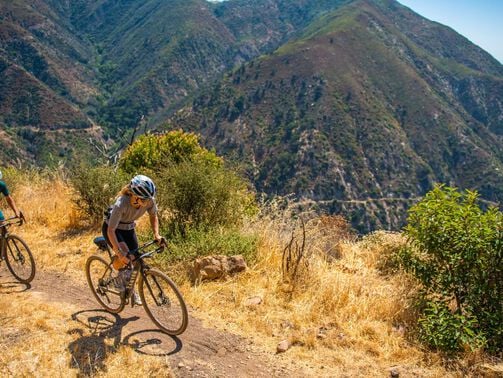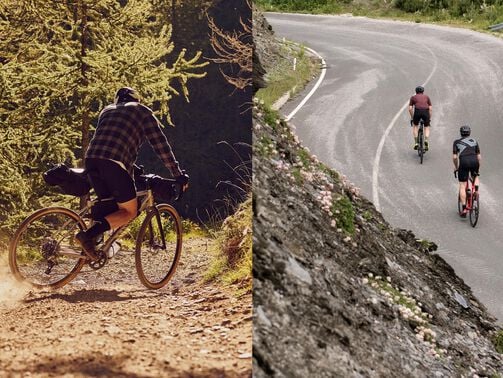Grail or Grizl: Which gravel bike is best for you?
Having expanded our range of gravel bikes, we’ve sat down to look at the similarities between the Canyon Grail and Canyon Grizl so that you can get the right bike for you.
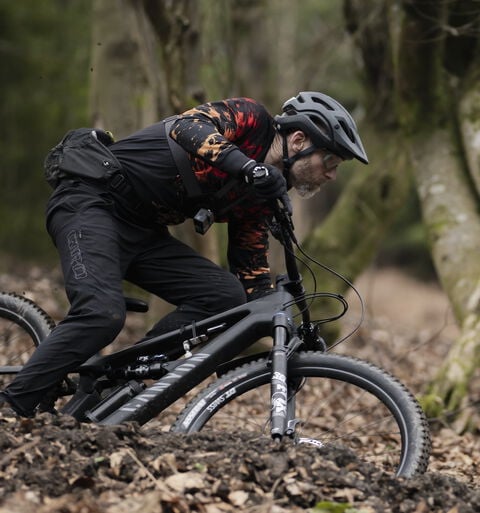

Contents
Grail vs Grizl: Main differences
Race or roam?
The Canyon Grail is a bike designed to maximize your speed, with a truly lightweight and aero setup that bridges the gap between tarmac and trail. High performance racing and riding, year-round.
The Canyon Grizl is an all-terrain focussed gravel bike that is built to roam rougher terrain on a day of play or longer distance adventures. It offers more stability, luggage capacity and wider tyre clearance and comes in both OG and Escape flavours to suit your wild riding style.
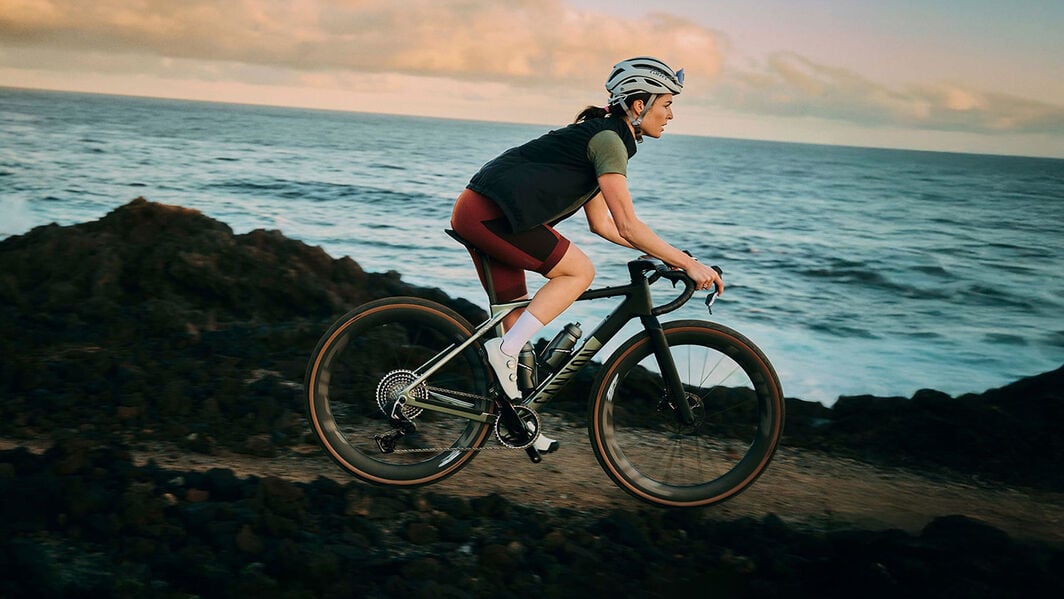
Grail
Rapid where you want it. Rugged when you need it. The Canyon Grail sets the benchmark for gravel performance. And whether you’re looking to line up at Unbound or haul down doubletrack, the Grail is ready to move at speed.
Its inspiring handling and compliant chassis will have you pinning it over rough stuff, while the lightweight carbon frame lets you push the pace uphill and down. Factor in the integrated storage and you have a bike born for all-terrain speed and distance.
The Grail is now available across four platforms The top-line CFR range, using the lightest carbon fibre frameset, CF SLX which shares the ultra-versatile, adaptable Double Drop Pro cockpit with CFR, CF SL with conventional cockpit and Grail AL. CFR and CF SLX bikes also include Canyon X DT Swiss RIFT suspension fork options.
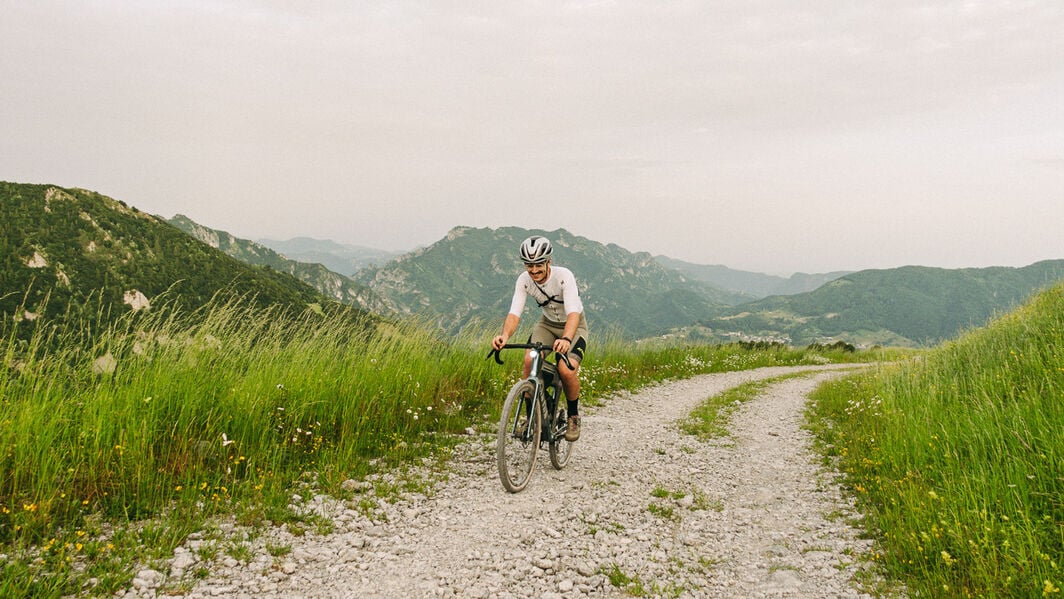
Grizl
Canyon Grizl is our ultimate do-anything, go-anywhere Gravel bike with an all-new carbon fibre frame that’s ready for every adventure. With 54mm of tyre clearance, LOAD internal storage, multiple mount points and confident handling on the toughest trails, it's a truly fantastic freedom machine.
Because we don’t want to limit your gravel-riding ambitions we’ve built Grizl into two distinct families – OG and Escape. Both Grizl’s are available with Canyon X DT Swiss RIFT suspension fork and ECLIPS Endless Charge & Lighting Integrated Power System adventure power system options, plus bespoke bag and racks too.
Grizl OG is our ‘Swiss Army Knife’ bike with high grip tyres and pure gravel groupsets for effortless all- terrain speed.
Grizl Escape is our dedicated Explorer with our innovative Full Mounty cockpit for improved comfort and accessory mounting, tough-but-fast-rolling Schwalbe tyres and extended-range ‘mullet’ gearing with MTB rear gears to ease the toughest climbs and longest days.
There is also the AL aluminium build for maximum utility and value, as well as the Grizl:ONfly models, with powerful integrated motor and high-capacity battery to take you further, and faster, with ease
Grail vs Grizl: Geometry
Rough terrain requires stability, responsiveness and clearance for wider tyres.
Both the Grail and the Grizl sport a longer wheelbase than their road bike cousins for increased stability on the rough stuff, as well as being relatively upright to ensure comfort.
In terms of Stack+ and Reach+, the Grail has a slightly lower Stack+ and longer Reach+, which gives the rider a more aerodynamic riding position that evens out weight distribution more between the wheels and encourages faster riding.
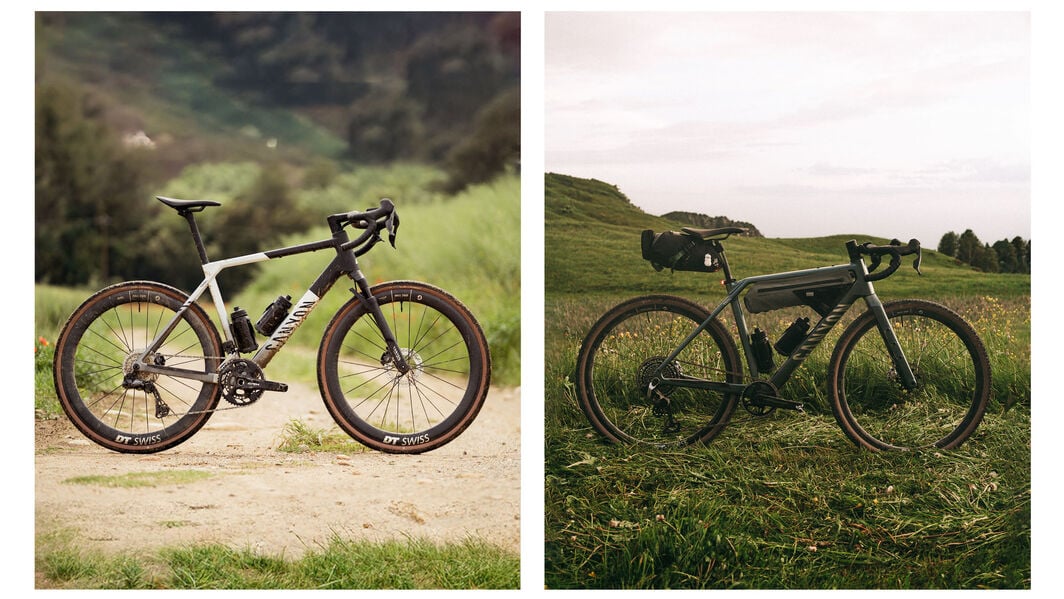
Grail vs Grizl: Tyre clearance
When you’re riding gravel and rocky terrain, you want to be comfortable and wide tyres take the brunt of the lumps and bumps to give you a smoother ride.
The first major difference you’ll notice between the two bikes is tyre clearance.
The Grizl is more at home on harsh terrain than the Grail. Its standard 45 mm tyres really enable you to explore the wildest trails for an ultimate adventure, and the maximum clearance is up to 54 mm for an even plusher ride when the bike is loaded with extra weight.
The Grail’s 40 mm tyres make it the ideal choice if you’re mixing your gravel and road riding. If you want to fit fenders, that’s no problem either. Without fenders, you can fit up to 42 mm tyres.
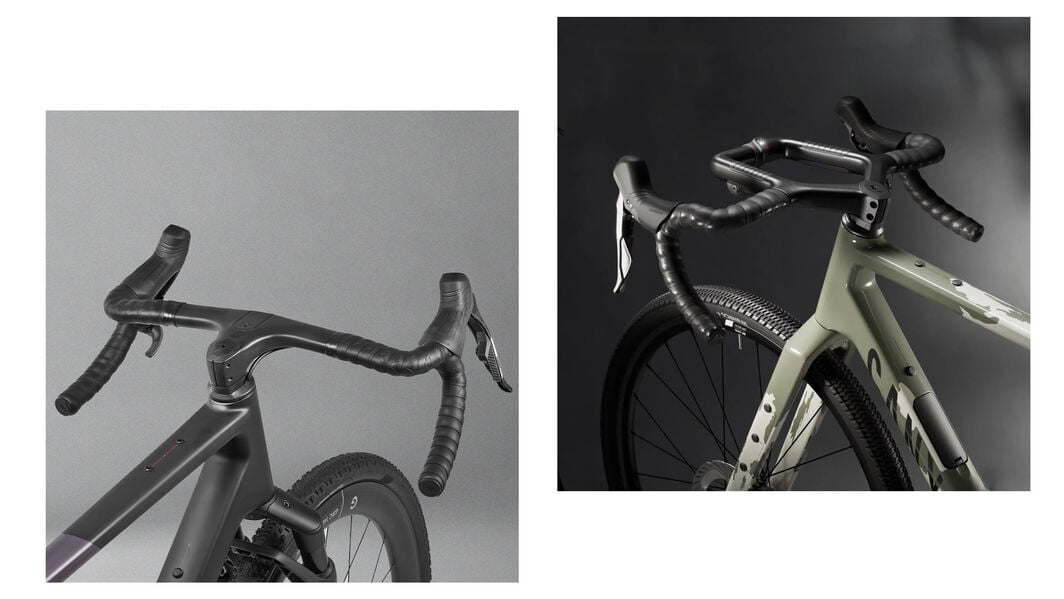
Grail vs Grizl: Cockpit and handlebars
The differences between the Canyon Grail and Grizl cockpits depend on the version. Grail uses our Double Drop Bar or a conventional bar and stem, depending on model. Grizl OG also uses a conventional bar and stem while the Grizl Escape uses our ultimate ‘go far bar’, the multi-position Full Mounty.
The Double Drop Bar takes everything we learned from the Generation 1 Double Decker Bar and incorporates it into a lightweight, aerodynamic package with the clever and functional Gear Groove mounting point for accessories or aero extensions. The Double Drop Bar has wide, flared drops, a subtle back sweep on the tops and a light flare at the shifters, offering an ideal mix of comfortable and aggressive riding positions.
Full Mounty is a radical complete bar system with a split stem and forward hoop extension, providing a whole new world of ways to hold onto your bike and maximize your comfort on the longest rides. You can also easily mount lights, GPS, bespoke fit bags and even spare bottles to the innovative cockpit.
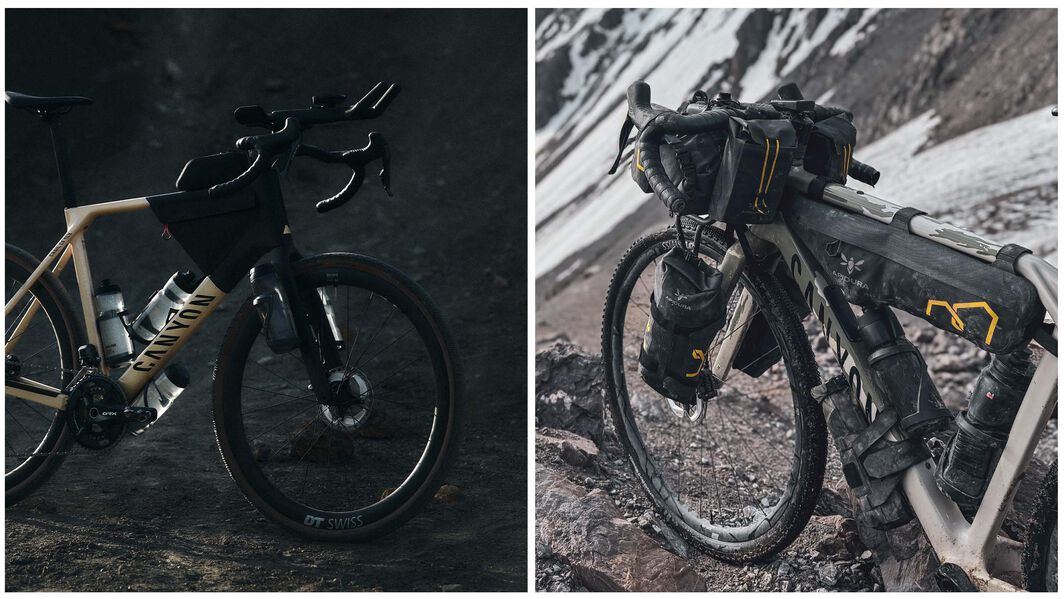
Grail vs Grizl: Storage and Gear Mounting
Gravel riding has become synonymous with long-distance bikepacking adventures, and both the Grail and the Grizl offer plentiful options to carry and mount your belongings on the frame.
As races get longer and faster we optimised Grail storage for speed with the internal LOAD compartment and bespoke aerodynamic bags that actually make you faster. Plus a ton of conventional cargo mounts for party pace(rather than race pace) rides.
From years of wind tunnel testing, we know that frame storage can make a bike more aero. So, for the Grail we developed the Aero LOAD system out of a mix of internal storage and custom frame bags for an a la carte setup where riders can choose how much kit to carry or how aero to make the frame.
The LOAD FidLock QuickLoader bag was made just for the Grail and can be instantly attached and removed using a special clip system. It blends seamlessly with the frame and even improves aerodynamics.
The unique design allows you to securely stash an inner tube, levers, and inflator in a special noise-damping pouch, while your mini tool and pump lock into an integrated hatch within the downtube (CFR AND CF SLX only).
With its all-terrain adventure focus Grizl has even more opportunity to load up and leave your worries behind. A larger volume frame increases space for perfect fit Canyon bags or other gear you already have. LOAD storage lets you store essentials inside.There are also custom front and rear racks plus RIFT suspension fork cargo sleeve options. The Full Mounty bar on Grizl Escape adds even more storage options, so whatever you need to take you can carry it with ease.
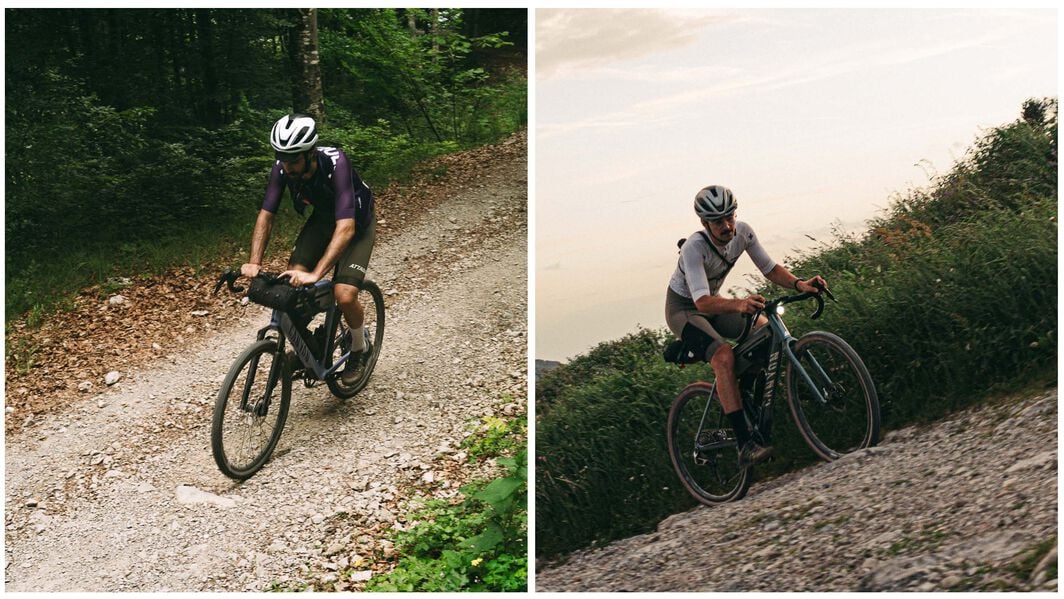
Grail vs Grizl: Dropper compatibility and suspension
With gravel races getting rougher and packs getting tighter, front suspension can often be worth the extra weight in terms of survival and speed. To make sure we did gravel suspension right we collaborated DT Swiss to create RIFT. A fully integrated, handlebar controlled, 40mm gravel fork that makes you faster where everyone else slows down. Suspension also reduces fatigue, increases control when you’re tired and just makes rough miles a whole lot easier when you’re exploring or just riding for fun instead of racing. As a result, the Canyon X DT Swiss RIFT fork is available as the ultimate smooth-equals-speed upgrade on select models of both the Grail and Grizl.
Dropper seatposts are essential kit for most mountain bikers and they’re becoming increasingly popular for adventure gravel too. They allow you to shift your weight around easily and lower your centre of gravity for better balance and stability over technical terrain. That’s why we’ve made the new Grizl frame compatible with cable-operated dropper posts and, of course, you can mount a wireless RockShox Reverb XPLR seatpost to any SRAM AXS equipped Grizl bike too.
The D-shaped seat tube of the Grail means that it is not compatible with any dropper or suspension seatposts, but the seatpost we use as standard offers a high degree of flex and comfort.
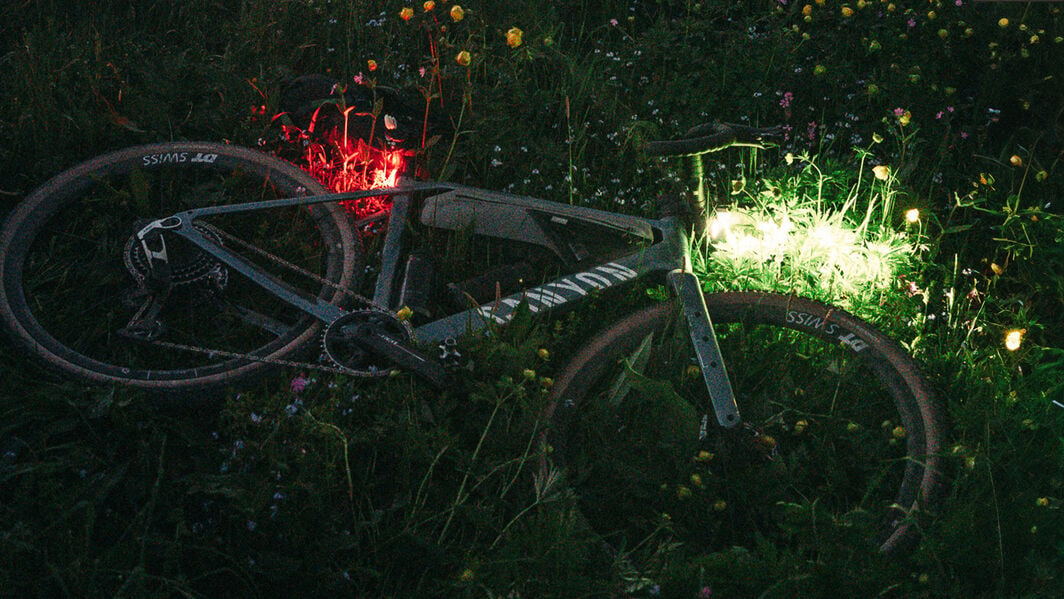
Grail vs Grizl: ECLIPS endless lighting and adventure power.
ECLIPS is a truly invaluable innovation in adventure biking and currently an exclusive on select Grizl OG and Grizl Escape models.
ECLIPS stands for Endless Charge & Lighting Integrated Power System and its unique, innovative design means you’ll never get left in the dark on your adventures. Even when you’re not moving. That’s because unlike other systems, ECLIPS is not merely a dynamo or a power bank. It’s a combined system that constantly, efficiently and smartly directs the energy your progress produces to where it’s needed.
Grail vs Grizl: What the reviews say
You’ve heard what we’ve had to say about the bikes, but what about the cycling press? Read a few review highlights:
“The new handlebar-stem combination is impressive: the cockpit flexes noticeably on the lower handlebars, and the attachment options for luggage or mudguards are unusual in the race category - but certainly practical [Best of Test 2023].”
TOUR magazin
“I've secured more cups and crowns on the local gravel sections than on any other bike. Its performance at the World Champs and several other international gravel races is a testament to the speed it carries and I think it's a bike that can elevate any gravel hobbyist's ride [Gear of the Year 2023].”
- off-road.cc
“A properly beautiful bike to behold… Delightfully light and highly responsive… An absolute joy to ride, very capable on any type of terrain, easy to maintain, highly versatile and ideal for day sessions or multiday bikepacking adventures, the Grizl CF SL 8 1by looks about as close to the perfect gravel bike for me as I can imagine. Five stars.”
T3.com
“An excellent gravel all-rounder… high level of comfort and balanced handling make it ideal for a wide range of use cases… offers significantly more adventure and off-road capability, including greater tire clearance, more mounting options (with the rigid fork), dropper post compatibility, and a less racy look and geometry.”
- Gran Fondo magazine
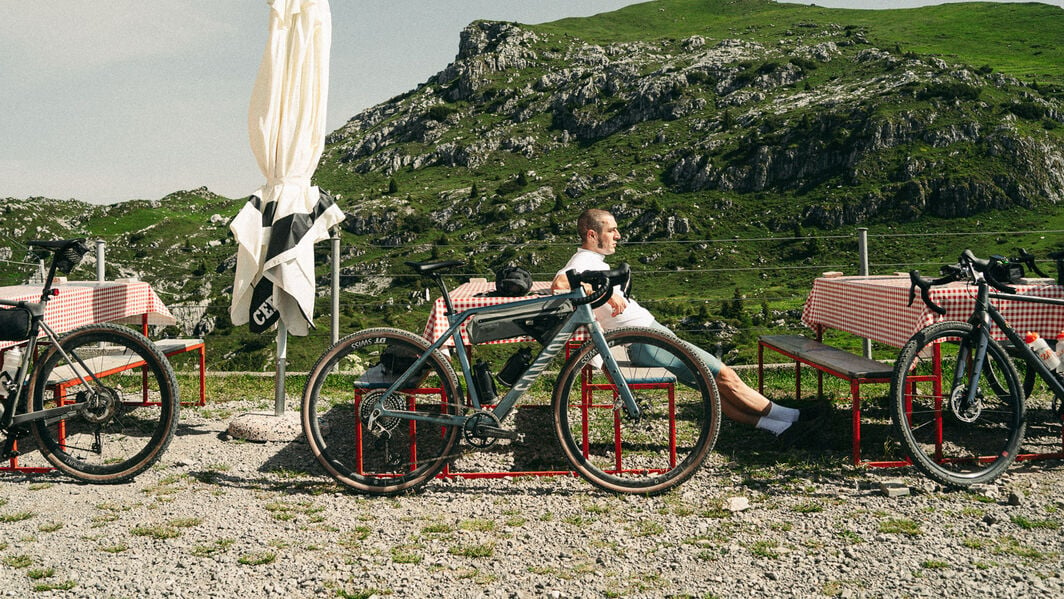
Grizl or Grail how to decide?
Hopefully you’ve now got a good idea of which of our category-defining Canyon gravel bikes will suit you best. But if you want to be double sure, we’ve summed it up in bullet points below. Because eveyone loves bullet points,right?
Get the Grail if you need...
- A truly lightweight, aero-advantaged gravel race bike.
- A bike that not only bridges the gap between tarmac and trail, but thrives in both environments.
- A bike for high performance, year-round riding, racing and training in all conditions.
- RIFT suspension options to keep you fast and fresh when others slow down.
- A fast-focused gravel bike for light bikepacking adventures.
Get the Grizl OG if you need...
- A do-it-all adventure machine that sets the fun free on every ride
- A gravel bike that’ll do double duty as a mountain bike when things get technical.
- ECLIPS options to keep you endlessly powered up, whether you’re late at a social or you pull a spontaneous all-night adventure.
- RIFT suspension options for the rowdiest tracks.
Get the Grizl Escape if you need...
- An innovative all-terrain explorer that truly enables your adventurous spirit.
- Maximum load-carrying capacity.
- Our awesome, extra comfort, extra cargo Full Mounty go-far handlebar.
- A tough, trustworthy partner for truly out-there routes.
- ECLIPS options to keep you endlessly powered up on off-grid adventures.
- RIFT suspension options for going the distance as safely and comfortably as possible.
Did this article help?
Thank you for your feedback
-
 About the author
About the authorGuy Kesteven
Meet Guy Kesteven, our author, a northern UK veteran who has been writing about off road bikes, tech and adventures for almost thirty years

